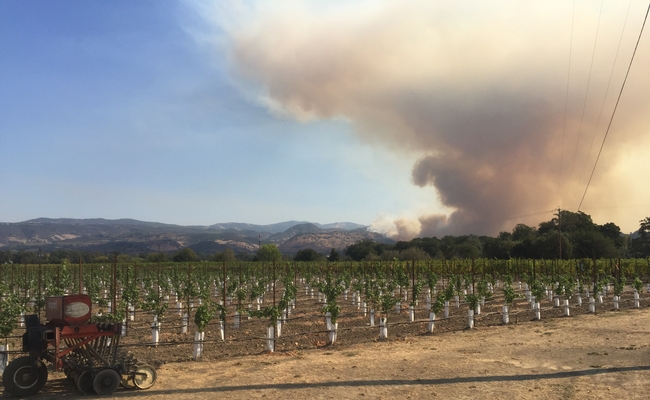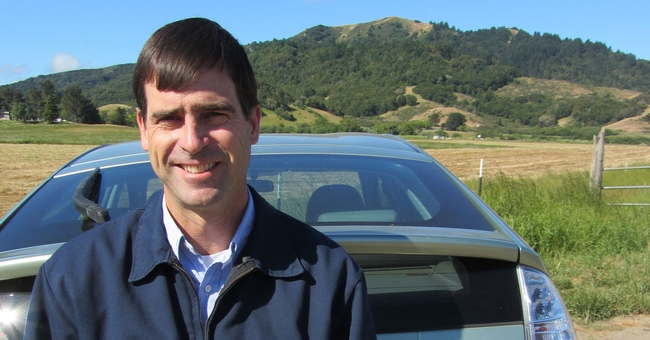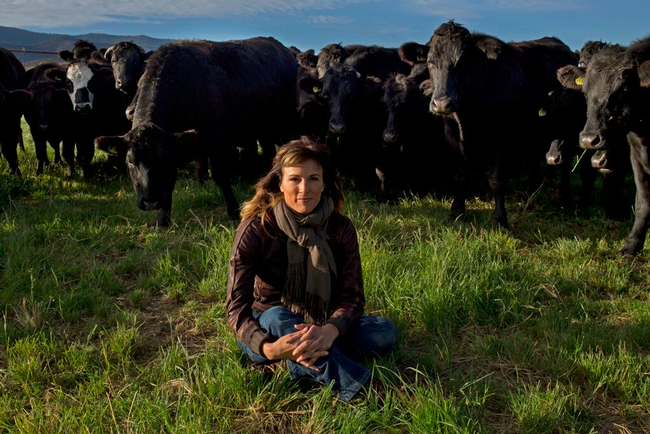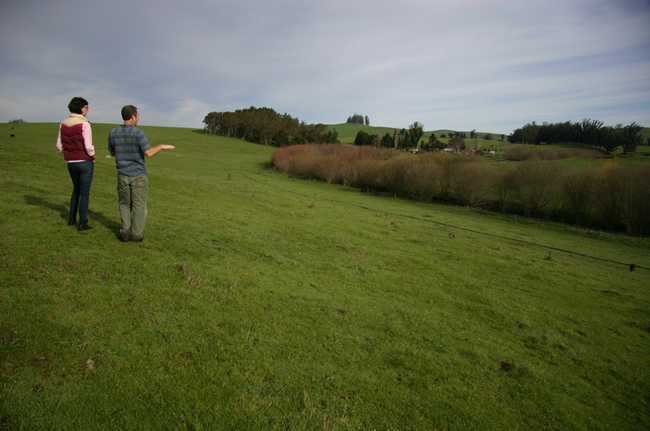Posts Tagged: David Lewis
Preparing to evacuate during wildfire? These checklists can help
To help people prepare, CAL FIRE has a checklist for evacuation online at http://www.readyforwildfire.org/Evacuation-Steps. UC Agriculture and Natural Resources scientists contributed to the research behind the recommendations.
A one-page checklist online at http://disastersafety.org/wp-content/uploads/2016/07/IBHS-Wildfire-Last-Minute-Checklist.pdf, also based on research by UC ANR scientists, is available from the Insurance Institute for Business & Home Safety.
Napa County residents have been told to be prepared in case they need to leave.
“We have team members tending to their own homes and or family's needs, providing support in shelters, and being available for immediate clientele needs in any way they can,” said David Lewis, UC Cooperative Extension director in Napa and Marin counties. “We look forward to calling upon UC colleagues with more experience to support our communities in the long recovery period. For the immediate future, we will stay focused in our efforts to support evacuation and shelter efforts – personal safety and needs are priority one until the fires no longer pose a threat.”
The main thing to remember when preparing to evacuate is to protect your life first.
“Don't die trying to prepare your house before you leave,” said Yana Valachovic, UC Cooperative Extension director and forest advisor in Humboldt and Del Norte counties. “Monitor the situation, watch the wind directions, and listen to all emergency personnel.”
To receive timely updates on fire conditions, Brian Oatman, UC ANR Risk & Safety Services director, uses Nixle. “While some communication methods may not work due to outages, the more sources we have, the better the chance that the message gets through,” Oatman said. To sign up for text alerts, visit http://www.nixle.com or text your zipcode to 888-777 to opt-in.
“We have coordinated with CropMobster to create a resource list at https://sfbay.cropmobster.com/bay-area-fire-resources where anyone can post any needs or offer help of any kind,” said Stephanie Larson, UC Cooperative Extension director in Sonoma County. “UCCE Sonoma has also created a Disaster Recovery for Agriculture Operations at http://cesonoma.ucanr.edu/Disaster_Resources for homeowners and managers of rangelands. UCCE is working closely with Sonoma County to provide UC ANR resources to assist with the recovery of our community that has been devastated by this fire.”
In Yuba County, the Cascade fire is 45 percent contained as of Oct. 12. “Evacuation orders are being lifted in parts of Yuba County,” said Janine Hasey, UC Cooperative Extension director for Sutter and Yuba counties. “Kate Wilkin, our new UC Cooperative Extension forestry, fire science and natural resources advisor in Sutter, Yuba, Butte and Nevada counties, has assembled resources for residents who are returning to their homes at http://cesutter.ucanr.edu/Fire_Information. We will be updating the website with more recovery information in the coming days.”
David Lewis to receive Bradford Rominger Agricultural Sustainability Leadership Award
The Agricultural Sustainability Institute (ASI) at UC Davis has announced that David Lewis, UC Cooperative Extension watershed advisor for California's north bay and UC Davis alumnus, is this year's recipient of the Eric Bradford and Charlie Rominger Agricultural Sustainability Leadership Award.
For 17 years, Lewis has served as a UC Cooperative Extension advisor, helping farmers, ranchers, conservationists, and other stakeholders solve challenging and contentious issues surrounding the health of their watersheds.
The Bradford Rominger award honors individuals who exhibit the leadership, work ethic and integrity epitomized by the late Eric Bradford, a livestock geneticist who gave 50 years of service to UC Davis, and the late Charlie Rominger, a fifth-generation Yolo County farmer and land preservationist.
“David epitomizes the very fiber of character that this award celebrates,” says Kenneth Tate, Russell L. Rustici Endowed Chair in Rangeland Watershed Science at UC Davis and 2012 Bradford Rominger award recipient.
After starting his work in sustainability with the Peace Corps in Africa and completing a master's degree in international agricultural development at UC Davis, Lewis joined UC Cooperative Extension as its first watershed advisor.
Tate praises Lewis' ability to “put his quiet, honest, credible manner to good work” to help build trust and understanding so communities can have frank discussions about the challenges facing their watersheds.
Lewis' accomplishments include helping to reduce the dairy pollution hurting the oyster beds of Tomales Bay and helping ranchers reduce erosion on their property, letting them play a key role in conserving critical coho salmon habitat and protecting the water quality of north coast rivers.
“I help my communities work towards a shared goal,” says Lewis, reflecting on his role as a leader.
“Marin County and places like it have placed a value on open working landscapes, and made land use policies 40 years ago to protect them. As we face new challenges, whether it's a new invasive weed or where solar panels can go, we can always go back to that shared value.”
For Lewis, many of those successes stem from an eagerness to hear and understand the needs of community members, something he considers a privilege of his job.
“When talking with people at their kitchen tables or at the gates at their ranches, I get to feel the deep knowledge and connection people have with the landscape, hear their family histories and desires to innovate and do something different. And I appreciate that I've got a small role in it somewhere.”
Lewis will be presented the award at the Shepherds of Sustainability: Celebrating Leadership in Watersheds, Rangeland, and Livestock Sustainability event April 19 in Davis. The event is free and open to the public. Students are strongly encouraged to attend.
The Shepherds of Sustainability event will include an award ceremony and talks by David Lewis and keynote speaker Anya Fernald, CEO of Belcampo — a collection of organic ranches, butcher shops, and restaurants in California and an agritourism venture in Belize — on the topic of expanding awareness and access to sustainable foods. Fernald was recently recognized in Food & Wine's “40 under 40” list and featured in profiles in The New York Times and The New Yorker, and has served as a regular judge on Iron Chef America.
More Information on the event and award can be found on the Agricultural Sustainability Institute's website.
Shepherds of Sustainability: Celebrating Leadership in Watersheds, Rangeland, and Livestock Sustainability event & Bradford Rominger award ceremony
Wednesday, April 19
International House Davis, 10 College Park, Davis
| 4:00 p.m.: | Student only discussion with David Lewis and Anya Fernald on leadership in agricultural sustainability |
| 5:30 p.m.: | Award ceremony and talk by Anya Fernald on the topic of expanding awareness and access to sustainable foods |
| 7:00 p.m.: | Reception |
Counties can offset greenhouse gas emissions with stream restoration
“We have long known that stream revegetation improves wildlife habitat and enhances water quality, but that fact that the vegetation and trapped sediment capture carbon underscores the importance of this conservation practice,” said David Lewis, a UC Agriculture and Natural Resources (UC ANR) watershed management advisor for Marin, Sonoma and Napa counties.
Going back to the time when Gen. Mariano Guadalupe Vallejo was running long-horn cattle on a vast tract of land in Alta California, ranchers didn't always understand the value of the trees, shrubs and grasses that grew around rangeland waterways.
Vallejo removed vegetation because it provided a hideout for grizzly bears that attacked his cattle and pilfered hides being tanned. In later years, authorities coached landowners to alter streams and remove plants to increase stream flow and improve flood control.
Beginning in the 1960s, the environmental impacts of removing trees and plants became apparent and public funds were made available to share in the cost of restoring streamside vegetation on private land, said Lewis, who is also director of UC ANR Cooperative Extension in Marin and Napa counties. Over a period of three years, he and a team of UC and local scientists studied the stream revegetation projects that took place from about 1970 to just recently. They documented the carbon sequestration benefits of stream revegetation and calculated the value based on the current market for carbon credits. The results were shared in a report released this month, Mitigating Greenhouse Gas Emissions through Riparian Revegetation.
“In Marin County, for example, the cost per metric ton for carbon dioxide equivalence sequestered with revegetation was $19.75. The carbon market is currently paying about $12.50,” Lewis said. “There is about $7 that we haven't made up. But when you think about the other benefits of riparian restoration – reduced sediment, restored habitat for migratory songbirds and other wildlife – I would bet that value to be much greater than $7.”
Lewis' research will be of interest to county governments as they strive to reduce total greenhouse gas emissions to comply with the requirements of the 2006 California Global Warming Solutions Act (AB 32). The legislation requires California to reduce its greenhouse emissions to 1990 levels by 2020. As part of the law, local governments must write a “Climate Action Plan” to report how they will monitor and track progress in reducing and offsetting greenhouse gas emissions.
“It may make sense for governments and project proponents to invest in creek restoration and other farm conservation practices to reach and surpass their carbon emission reduction goals,” Lewis said.
Through 1990, Marin ranchers restored more than 25 miles of stream with willows, oaks and other trees and shrubs. Those plants trapped sediment contain an estimated 80,265 metric tons of sequestered carbon – an amount equal to emissions from 61,959 passenger cars in one year.
Lewis estimates there are several hundred miles of unrestored streams in Northern California coastal counties. And the implications of this study have application for rangeland streams throughout California.
“This represents tremendous potential for carbon sequestration,” Lewis said. “And rancher interest in stream restoration has never been higher. Working with the ranchers to plant trees and shrubs along our waterways presents a significant opportunity to offset carbon emissions.”
An initiative to maintain and enhance sustainable natural ecosystems is part of UC Agriculture and Natural Resources Strategic Vision 2025.
When oysters and cows collide
California’s scenic Marin County is home to two thriving industries that were once in conflict – oyster farming and dairy farming.
In order to grow healthy and marketable oysters, the farmers depended on clean water in Tomales Bay. But regulations meant to protect the bay from cattle runoff were so strict that dairy farmers feared they could no longer stay in business.
Now, with help from David Lewis, director of UC Cooperative Extension in Marin County, these two communities have found creative solutions that allow both kinds of farmers to share this beautiful and fertile region. Find out how in a four-minute report by Kristen Simoes on UCTV Prime Cuts, “Cooperation Trumps Conflict in Tomales Bay.”
Fair exhibit a tribute to Marin's first advisor
UC Cooperative Extension's first farm advisor in Marin County was featured in a story written by Vicki Larson in the Marin Independent Journal.
M.B. Boissevain, who became a UCCE advisor in 1920, took approximately 500 photos of Marin agriculture and its people during his 30-year career. Ellie Rilla, UCCE advisor in Marin County, and David Lewis, UCCE director and advisor in Marin County, assembled an exhibit of 74 of his photos that was on display at the Marin County Fair June 30 – July 4.
Lewis and Rilla have also written a book, “Marin Agrarian Roots,” about the agricultural history of the county based on Boissevain’s photos and farm reports.





